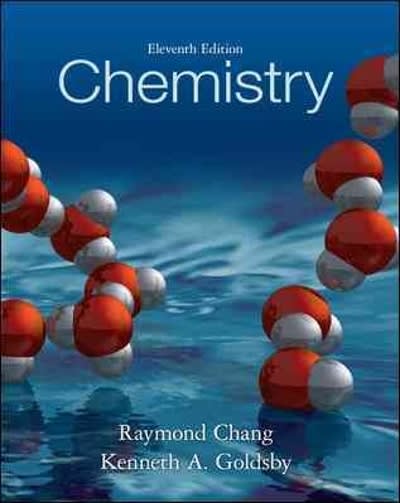Question
Electrical Power Dissipation 12 points) It may be useful to refer to Figure 2.3 in the Experimental section for Milestone 1 below for this question.
Electrical Power Dissipation 12 points) It may be useful to refer to Figure 2.3 in the Experimental section for Milestone 1 below for this question. This pre-lab question mirrors the process you must employ in the first laboratory session in order to complete Milestone 1 for this experiment. Before employing a calorimeter to determine heat of combustion with a real chemical sample, one must first i) experimentally measure the heat capacity of the calorimeter and ii) validate the experimental apparatus and protocol i.e., i) calibrate and ii) validate. Figure 2.3 illustrates the configuration employed for the Milestone 1 calibration step. The calibration process for determining the heat capacity of the calorimeter involves dissipating a known (i.e. measured) amount of energy via the heater resistor and measuring the change in temperature of the entire calorimeter apparatus to accurately determine the heat capacity for the calorimeter- in units of kJ/K.
a. (3 points) A 24-volt DC power supply is employed to apply 24.0 V across the entire system (i.e., both the ~10 heater resistor + the 0.25 sensing resistor). By measuring the temporal voltage across the precise and external 0.25 resistor, Ohms3 law (i.e., V=iR) can be employed in order to calculate the electrical current (I) flowing through the heater resistor where V is the difference in voltage across the heater resistor. Assuming the voltage at the point in Figure 2.3 connected to ADC_CH_0 measures 24.00 V with respect to ground and the voltage at the point connected to ADC_CH_1 measures 23.23V, calculate and report the electrical current (I, in amperes) flowing through the electrical circuit. b. (3 points) The 10 heater resistor is used to transfer a known amount of energy (in the form of heat) into the system in order to determine the heat capacity of the bomb calorimeter. The power (P) dissipated in the ~10 heater resistor residing inside the bomb calorimeter is the product of the electrical current (I) and the voltage across the heater resistor (i.e., the difference in voltage measured at the point connected to ADC_CH_1 (23.23 V for this example) and the other end of the heater resistor which has been defined as ground or 0.0 V) - P(watts) = I(amperes) x V(volts). Calculate the power dissipated in the heater resistor. c. (3 points) The total energy dissipated inside the bomb via the heater resistor is the product of power and time (or the integral/area under the curve of a power vs. time plot), typically reported in units of Joules or kilojoules where: 1 watt-second = 1 Joule. If the heater is run for a total of 7.00 minutes, and somehow the measured voltage across the heater resistor remains exactly 23.23 V for the entire time: i. Hand-sketch a plot of the power (y-axis) versus time (x-axis) for the power being dissipated in this system for this example. ii. Integrate the area under the power-time curve that you have sketched in order to determine the total energy, in kilojoules, dissipated inside the bomb calorimeter for this example. d. (3 points) Assume that you now measure the temperature of the entire calorimeter to have increased from 20.00 to 23.10C as a result of operating the heater resistor for 7.00 minutes. Calculate and report the heat capacity (C, kJ/C) for this calorimeter. This value should be within 10-20% of the estimate you came up with in Question 1 of this pre-laboratory assignment or you have done something wrong.
Step by Step Solution
There are 3 Steps involved in it
Step: 1

Get Instant Access to Expert-Tailored Solutions
See step-by-step solutions with expert insights and AI powered tools for academic success
Step: 2

Step: 3

Ace Your Homework with AI
Get the answers you need in no time with our AI-driven, step-by-step assistance
Get Started


